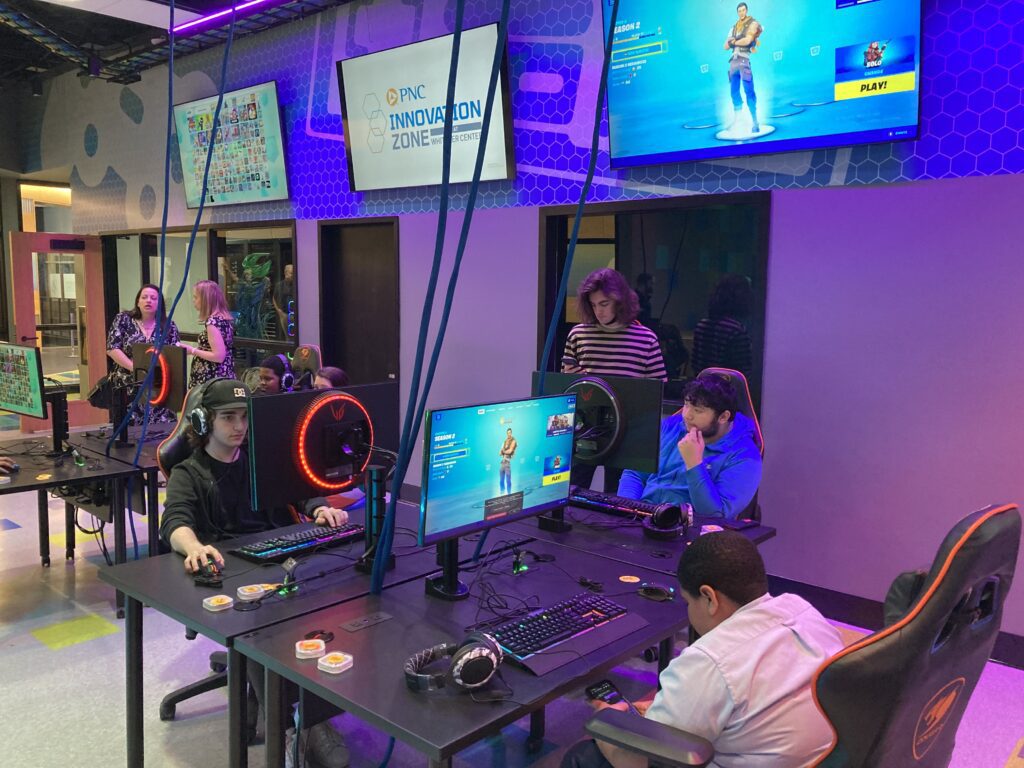Video games are being increasingly used for educational purposes due to their ability to inspire creativity and boost critical thinking skills. Research has shown that video games can help students retain information better through repetition, improve critical thinking skills, and create engagement and motivation through a sense of accomplishment and rewards. Gaming in K-12 education is being facilitated by game-based learning platforms, such as Kahoot!, Minecraft: Education Edition, and Classcraft, which allow educators to enhance traditional learning techniques. In higher education, simulations are being used for medical training, while educational video games are being used to teach problem-solving and critical thinking skills. The future of gaming in education is limitless, with virtual reality and mixed reality technologies offering new ways to bring education to life, and artificial intelligence creating personalized learning plans for students.
Gaming and Education: Innovations for Learning with Video Games
Introduction
Video games are no longer just a pastime for children or a form of entertainment for adults. They have become a tool for learning and education as well. Gaming provides a rich and engaging experience that has a unique ability to inspire creativity and boost critical thinking skills. This article explores the role of video games in education, the benefits they bring, and the innovative ways gaming is being used for learning.
The Benefits of Gaming in Education
Video games offer several benefits when used for educational purposes. First, they help students retain information better. Studies have shown that repetition is one of the most effective ways to learn, and video games offer an excellent platform to master difficult concepts through repetition. Moreover, games can be designed to create a sense of accomplishment and reward when students master a concept or complete a task, further enhancing their engagement and motivation. Additionally, games can improve critical thinking skills by requiring players to navigate complex scenarios, analyze multiple variables, and make quick decisions.
Gaming in K-12 Education
Innovations in the gaming industry have created an opportunity for gaming in K-12 education. Numerous game-based learning platforms, such as Kahoot!, Minecraft: Education Edition, and Classcraft are being used in classrooms to enhance traditional learning techniques. Kahoot! is a game-based learning platform that allows educators to create quizzes and surveys that can be played as a group. Minecraft: Education Edition is an immersive educational version of the popular game Minecraft, which allows students to create and explore environments while learning about physics, geometry, and more. Classcraft is an online role-playing game that can be used to motivate students through a reward system integrated with traditional classroom learning.
Gaming in Higher Education
Gaming is not just limited to K-12 education. Universities and higher education institutions are also exploring the use of video games for learning. A prime example is the use of simulations in medical training. Medical students can use simulations to practice procedures and diagnose diseases, giving them a chance to learn and experiment without harming real patients. Moreover, games like Gone Home and Papers, Please are being used in literature and political science classes to teach problem-solving, interpretation, and critical thinking skills. Researchers are also looking at the use of educational video games for treating mental health disorders like anxiety and depression.
The Future of Gaming in Education
As technology continues to evolve, the potential for gaming in education is limitless. Virtual reality, augmented reality, and mixed reality technologies offer new ways to bring education to life. For example, a student could explore ancient Rome or witness a blood cell in action, creating an immersive learning experience that traditional methods cannot match. Additionally, the use of artificial intelligence can create personalized learning plans for students, adapting to their strengths and weaknesses in real-time.
Conclusion
The integration of gaming in education creates an exciting future for learning, bringing the best of both worlds together. Video games provide a platform for immersive and engaging learning and can enhance traditional academic methods. However, the use of gaming in education requires careful consideration and planning to ensure students receive the best learning experience possible. As we continue to explore the potential of gaming in education, new opportunities, and innovations will continue to emerge.
